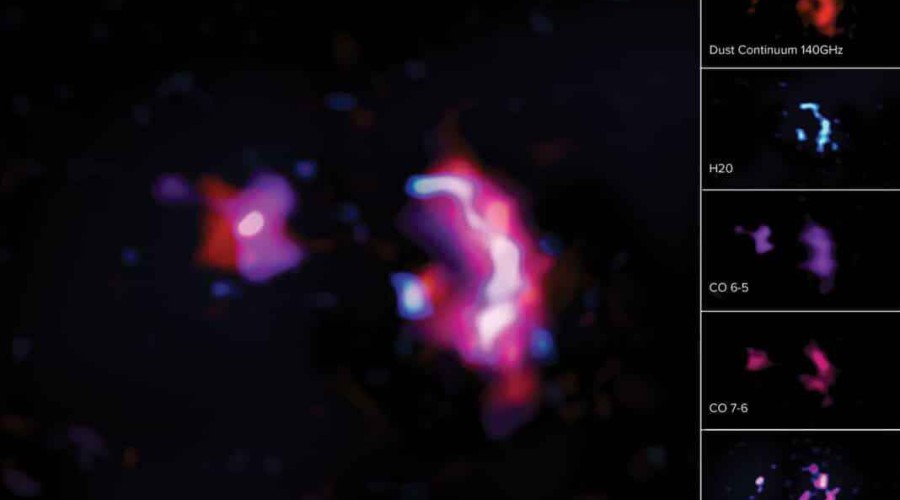Signs of water detected in a distant star-forming galaxy
The observations from ALMA revealed the signs of water and carbon monoxide in the galaxy in system SPT0311-58

Atacama Large Millimeter Array- ALMA has detected water in a distant galaxy in the early universe. The observations from ALMA revealed the signs of water and carbon monoxide in the galaxy in system SPT0311-58.
SPT0311-58 is located almost 12.88 billion light-years from Earth. The Discovery of these two molecules indicates that the molecular universe was going strong shortly after the elements were forged in early stars.
According to scientists, galaxies in SPT0311-58 may be merging. Also, their rapid star formation is not only using up their gas or star-forming fuel. Still, it may eventually evolve the pair into massive elliptical galaxies like those seen in the Local universe.
Sreevani Jarugula, an astronomer at the University of Illinois and the principal investigator on the new research, said, “Using high-resolution ALMA observations of molecular gas in the pair of galaxies known collectively as SPT0311-58, we detected both water and carbon monoxide molecules in the larger of the two galaxies. Oxygen and carbon, in particular, are first-generation elements, and in the molecular forms of carbon monoxide and water, they are critical to life as we know it.”
“This galaxy is the most massive galaxy currently known at high redshift, or the time when the universe was still very young. It has more gas and dust compared to other galaxies in the early universe, which gives us plenty of potential opportunities to observe abundant molecules and to understand better how these life-creating elements impacted the development of the early universe.”
“Water, in particular, is the third most abundant molecule in the universe after molecular hydrogen and carbon monoxide. Previous studies of galaxies in the local and the early universe have correlated water emission and the far-infrared emission from dust.”
